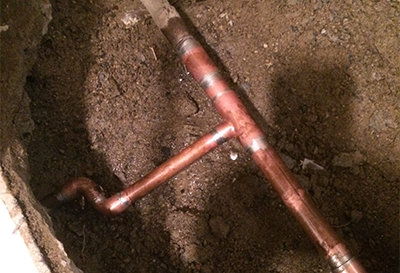Overview To Water Leakage Detection In Your Home
Overview To Water Leakage Detection In Your Home
Blog Article
How do you feel when it comes to Leaking water lines?

Early detection of leaking water lines can mitigate a potential disaster. Some little water leakages may not be visible.
1. Check Out the Water Meter
Every house has a water meter. Inspecting it is a proven way that helps you find leakages. For starters, switch off all the water sources. Make certain no one will flush, utilize the faucet, shower, run the cleaning equipment or dish washer. From there, go to the meter as well as watch if it will certainly change. Considering that nobody is using it, there must be no motions. That indicates a fast-moving leakage if it relocates. Furthermore, if you detect no changes, wait an hour or 2 and check back once more. This indicates you may have a slow leak that could also be below ground.
2. Check Water Consumption
If you identify unexpected changes, in spite of your usage being the exact same, it implies that you have leakages in your plumbing system. An unexpected spike in your expense indicates a fast-moving leakage.
At the same time, a steady rise on a monthly basis, despite having the very same routines, reveals you have a sluggish leakage that's additionally slowly escalating. Call a plumber to thoroughly check your residential property, particularly if you feel a cozy area on your floor with piping beneath.
3. Do a Food Coloring Examination
When it comes to water intake, 30% comes from toilets. If the shade in some way infiltrates your dish throughout that time without flushing, there's a leakage between the tank and also dish.
4. Asses Outside Lines
Don't neglect to check your outside water lines as well. Must water seep out of the connection, you have a loose rubber gasket. One tiny leakage can waste tons of water and surge your water expense.
5. Evaluate as well as Assess the Scenario
Home owners need to make it a routine to inspect under the sink counters and also also inside cabinets for any type of bad odor or mold growth. These two red flags indicate a leakage so punctual focus is called for. Doing routine assessments, even bi-annually, can save you from a significant trouble.
If you know your residence is already old, keep a careful eye on your heaters, hoses, pipelines etc. Look for stainings as well as deteriorating as a lot of appliances as well as pipes have a life span. They will additionally normally degrade due to tear as well as use. Do not wait for it to rise if you suspect leaking water lines in your plumbing system. Call an expert plumber right now so you don't end up with a horrible mess in your house.
Early detection of dripping water lines can mitigate a potential disaster. Some little water leakages may not be visible. Checking it is a guaranteed means that aids you uncover leakages. One tiny leakage can lose tons of water as well as surge your water costs.
If you presume leaking water lines in your plumbing system, do not wait for it to intensify.
How to Know If Your Home Has a Hidden Leak
Water Meter Reveals Inexplicable Water Usage
If you’d like to test whether or not there’s a leak somewhere in your home, you can do this using your water meter. Here is how to conduct the test:
Don’t use any water in your home for at least 30 minutes; this also means not turning on faucets or water-using appliances.
Go outside, and check your water meter for activity.
If your water meter shows that there was activity, even though no one was using any water, this proves that there is a leak in your home.Visible Mold or Mildew Growth
Leaks behind walls create moist, dark environments that allow mold and mildew to grow and thrive. Eventually, you might see mold growth forming on the wall closest to a hidden leak.
If mold is growing in an area that receives a high amount of moisture, such as a bathroom, it may simply be an indication that better ventilation is needed. However, if you see mold growth on a wall or the ceiling in an area where you would not expect, you probably have a hidden leak.
Musty, Mildew Odor
Sometimes you might not be able to see the mold or mildew that is growing as a result of a leak. However, the smell can give the problem away just as easily. If you catch a whiff of something musty, there’s a good chance that old water is collecting somewhere in your home that you can’t see.
Stained/Warped Walls, Ceilings, or Floors
When your home soaks up water, a variety of red flags can become visible, including ceiling stains, bubbling drywall, warped walls, and sagging floors. While these issues can be caused by excess humidity, they can also be signs that a pipe or plumbing connection has started leaking behind your walls.
Inexplicably High Water Bill
After a while, you get a general sense for what your water bill should be. If you own a pool or sprinkler system, your bill will tend to be higher during summer. However, if you receive a water bill that seems especially high, and you can’t figure out what caused it, then you may have a hidden leak somewhere that’s increasing your bill.
https://www.plumbingjoint.com/blog/2019/july/how-to-know-if-your-home-has-a-hidden-leak/

I'm certainly very curious about Finding hidden leaks and I hope you liked my piece. Are you aware of somebody else who is excited about the topic? Feel free to promote it. Thanks for your time. Come back soon.
Report this page